TL;DR
Yes—you can DIY this Pinterest‑style front yard with hydrangeas and a low border if you match plants to sun, give them room, and plan for seasonal upkeep. Visualize spacing, sun, and color in ReimagineHome.ai, then install in stages so the garden matures gracefully over 3 years.
2 steps first: Visualize the bed, then plant for the site

Using digital tools to plan hydrangea placement and front yard color for year-round appeal.
Try your own exterior layout instantly on ReimagineHome.ai: reimaginehome.ai. For this style of front yard design, the backbone is simple: a row of panicle hydrangeas (think Little Lime or Bobo) set back from the foundation, a neat front ribbon of seasonal color, and a razor‑clean lawn edge. The craft is in right‑sizing plants to your sun exposure, setting proper spacing, and planning year‑round interest so the bed looks intentional in winter too.
- At a Glance: Use 3–5 hydrangeas spaced 3–5 ft apart, keep 24–36 in off the foundation, and run a 12–18 in front strip for annuals or low perennials.
- Soil & Mulch: Amend clay or thin soils with compost; top with 2–3 in mulch (not piled against stems).
- Water: A hidden soaker hose simplifies weekly deep watering; annuals are thirsty.
- Timeline: Year 1 sleep, Year 2 creep, Year 3 leap.
- Budget: DIY materials for a 20–30 ft bed typically run $500–$1,200; pro install higher.
50–70%: Hardscape choices often decide low‑maintenance curb appeal

Hardscape elements like walkways and edging shape low-maintenance, lush front yards effectively.
Hardscaping design—edging, walkway width, and grading—quietly controls how lush plantings read from the street. A crisp edge can come from a weekly spade line or long‑lasting steel edging; either way, it’s the frame that makes hydrangeas look tailored. Most landscape designers recommend 36–48 inches for primary walkway ideas, which keeps foliage off your shins and lets blooms billow without crowding. If you’re dreaming of future outdoor living, reserve space now for a small stone patio or a bench pad so plant massing doesn’t block those upgrades later.
Lighting matters, too: outdoor lighting design typically looks best at 2700–3000 K for warm, flattering tones across white hydrangea blooms and bronze foliage. Add a single path light at the stair return and one uplight on the Japanese maple or narrow evergreen to hold the scene at night.
Alt: "Twilight view of a front yard hydrangea row with warm 2700 K path lights, visualized in ReimagineHome.ai."
Caption: "Test night scenes in ReimagineHome.ai before wiring anything permanent."
Anecdote
A homeowner in Los Angeles turned a narrow side yard into a cinematic, stone‑lined walkway by setting 42 inches of clearance, tucking in dwarf hydrangeas, and letting the path lights paint the plaster wall every evening—proof that restraint reads as luxury outdoors.
5 trends shaping front‑yard design (and what to plant instead of peonies)

Five front yard trends favor resilient, pollinator-friendly plants over traditional peonies.
Front yard design keeps evolving toward resilient, pollinator‑friendly, and right‑sized plants. If you loved the look of peonies as a front ribbon, know they flower for just a few weeks and grow taller than you’d want at the curb. Here’s what endures.
3–5 feet: Hydrangea paniculata sizes to pick on small foundations
Choose cultivars that mature between 3–5 ft tall/wide for easy pruning and a tidy base: Little Lime, Bobo, or Fire Light Tidbit. Keep 24–36 in of air between mature foliage and siding for maintenance and airflow.
1 season vs. many: Annual impatiens look lush, but perennials save replanting
Impatiens and SunPatiens are annuals; they deliver nonstop color but need water and replanting. Perennial swaps: hardy geranium (cranesbill), Cat’s Pajamas nepeta, or low coreopsis for a similar mounded line. In deer country, favor nepeta and geranium over impatiens.
2 evergreens: Winter structure anchors summer fluff
Add one or two narrow evergreens (globe arborvitae, slender yew) to avoid a “disappears in winter” bed. They’re your curb appeal insurance when deciduous shrubs go bare.
3 inches: Mulch depth that cuts weeds, keeps roots cool
Use a 2–3 in layer of shredded bark; keep it off stems. In heavy clay, prioritize compost and topsoil blends before planting.
2700–3000 K: Warm LEDs flatter white blooms at night
Test beam spread and placement digitally; you’ll avoid hot spots and see how shadows play across the facade.
Alt: "Side‑yard rendering of a 30‑inch mown edge, steel edging, and Little Lime hydrangeas."
Caption: "Crisp lawn edges plus simple steel edging make seasonal color look deliberate."
4 clicks: Use ReimagineHome.ai to test hydrangeas, borders, and edging

Test plant spacing and edging virtually with AI tools before starting your landscaping project.
AI landscape design helps you get spacing, sun, and scale right—before you buy a single plant. ReimagineHome.ai functions as a free ai landscape generator from photo for quick drafts and as a deeper ai yard design tool when you’re ready to iterate.
- Step 1: Upload a daylight photo of your facade and mark the bed edges.
- Step 2: Drop in 3–5 hydrangeas, set mature size to 3–5 ft, and test 36–48 in spacing.
- Step 3: Swap borders—impatiens, SunPatiens, hardy geranium, or nepeta—and preview density at 8–12 in on center.
- Step 4: Add one evergreen and a Japanese maple; check that foliage clears windows and walkways.
- Step 5: Toggle lighting at 2700 K and try a steel edge vs. spade cut to compare the curb appeal effect.
Explore more ideas here: front yard curb appeal ideas and a hardscaping materials guide.
2 homes, 2 zones: What worked in 5b and 6a

Two homes in different zones show varied hydrangea spacing and zoning for successful landscaping.
A homeowner in southeast Michigan (Zone 6a) planted two Little Limes, a globe arborvitae, and a front ribbon of nepeta to dodge the annual watering grind. By year three, the hydrangeas topped 3.5 ft, the nepeta bloomed from spring to frost, and the evergreen kept the entry grounded through winter.
In a high‑sun 5b prairie lot with clay, another owner amended the top 8 inches with compost, set three Bobos 30 inches off the foundation, and ran a soaker hose under 2 inches of mulch. Weekly deep soaks beat daily sprinkles, and the bed now reads like a single, calm mass—exactly the modern landscaping idea they wanted.
Visualization Scenario
Upload a straight‑on photo of your porch. Size three Little Limes to 4 ft mature width, set them 36 in off the siding, and lay a 14 in front strip of nepeta at 12 in on‑center. Toggle steel edging on/off to see how much cleaner the lawn line reads from the street.
10 quick answers: Front‑yard hydrangea border questions
- What are the plants in the “Pinterest” look? Hydrangea paniculata (Little Lime/Bobo), a Japanese maple, a small evergreen, and a front ribbon of impatiens or SunPatiens; some beds use liriope at the end.
- Can I use peonies for the front border? Peonies bloom 2–3 weeks and grow tall; for a tidy low edge, use impatiens, nepeta, or hardy geranium instead. Plant peonies behind the border if you love them.
- How far from the foundation should I plant hydrangeas? Give 24–36 inches clearance from mature foliage to siding; many compact panicles mature 3–5 ft wide.
- Full sun or part shade? Panicle hydrangeas prefer sun; impatiens prefer part shade. If you have all‑day sun, try SunPatiens or perennials like nepeta.
- How much will it cost? DIY materials for a 20–30 ft bed commonly run $500–$1,200; annuals add $50–$150 per year. A Japanese maple can be $150–$300+ depending on size.
- How do I keep the edge crisp? Spade a clean edge monthly or install steel edging once; mow with the wheel on the hard edge and string‑trim sparingly.
- Do deer eat these plants? Deer love impatiens and will sample hydrangeas. Use deer‑resistant borders (nepeta, hardy geranium), and consider repellents.
- When do I prune Little Lime/Bobo? Late winter. Reduce to a framework 18–30 inches tall; they bloom on new wood.
- What about winter interest? Add 1–2 narrow evergreens and leave hydrangea blooms standing; they dry beautifully and carry structure.
- Can AI help me design this? Yes—use ReimagineHome.ai for ai outdoor design. Upload a photo, place shrubs, test walkway ideas, and preview lighting before ordering plants.
More reading: outdoor lighting at 2700 K.
1 link: See your front yard’s next chapter before you dig
Before you start digging, model the bed, the lawn edge, and even the night lighting. One session in ReimagineHome.ai can save a cart full of impulse plants and a season of second‑guessing.
.svg)

.svg)



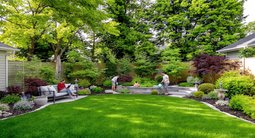
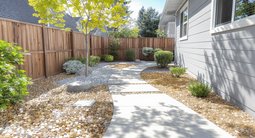
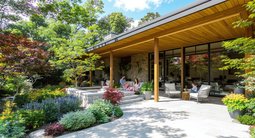
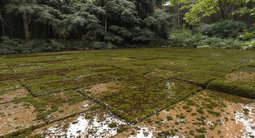
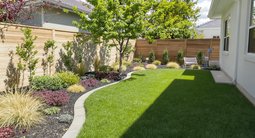
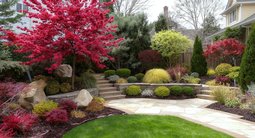





.png)